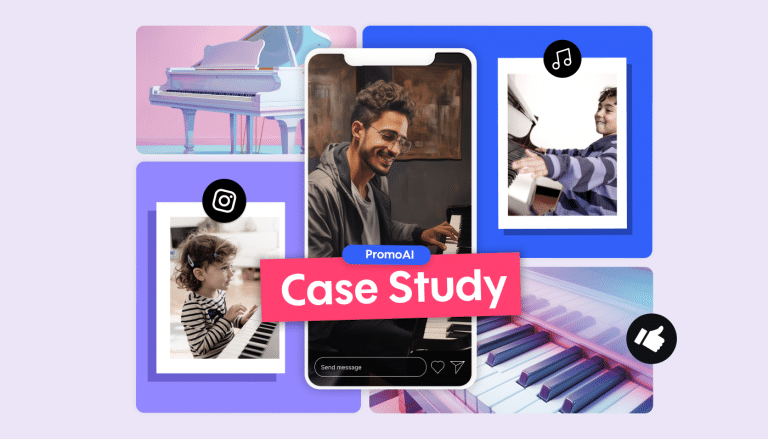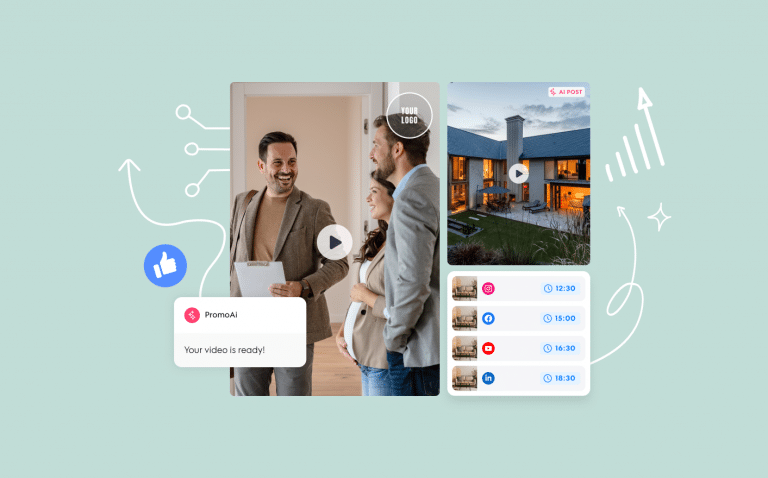
Your Social Media Calendar: Planning Every Post
What does Black Friday, Women’s History Month and Easter, all have in common? They are all events that should be in your social media calendar!
What’s a social media calendar, you ask?
Well, no biggie, it’s only one of the most important tools in your social media marketing toolbox. It’s essentially a roadmap of your entire social media strategy, ensuring you don’t miss a single marketing-worthy moment. It gives you (or your social media managers) a bird’s eye view of all the content that needs to be published at all times so nothing ever falls between the cracks.
A simple calendar has the power to turn your social content strategy into a well-oiled machine. When you’re able to prepare weeks in advance, you avoid the stress of coming up with last-minute content and you’re very rarely caught off guard. So all in all, your calendar will save you time, energy and money while engaging your audience with well-prepared content and ultimately, taking your business to the next level.
Not convinced yet?
According to the Content Marketing Institute, 92% of content marketers use social media to distribute their content – and for good reason.
Convinced but not sure how to get started?
Okay, first of all, don’t worry. There are tons of resources and templates out there to help you build a solid foundation for your social media calendar.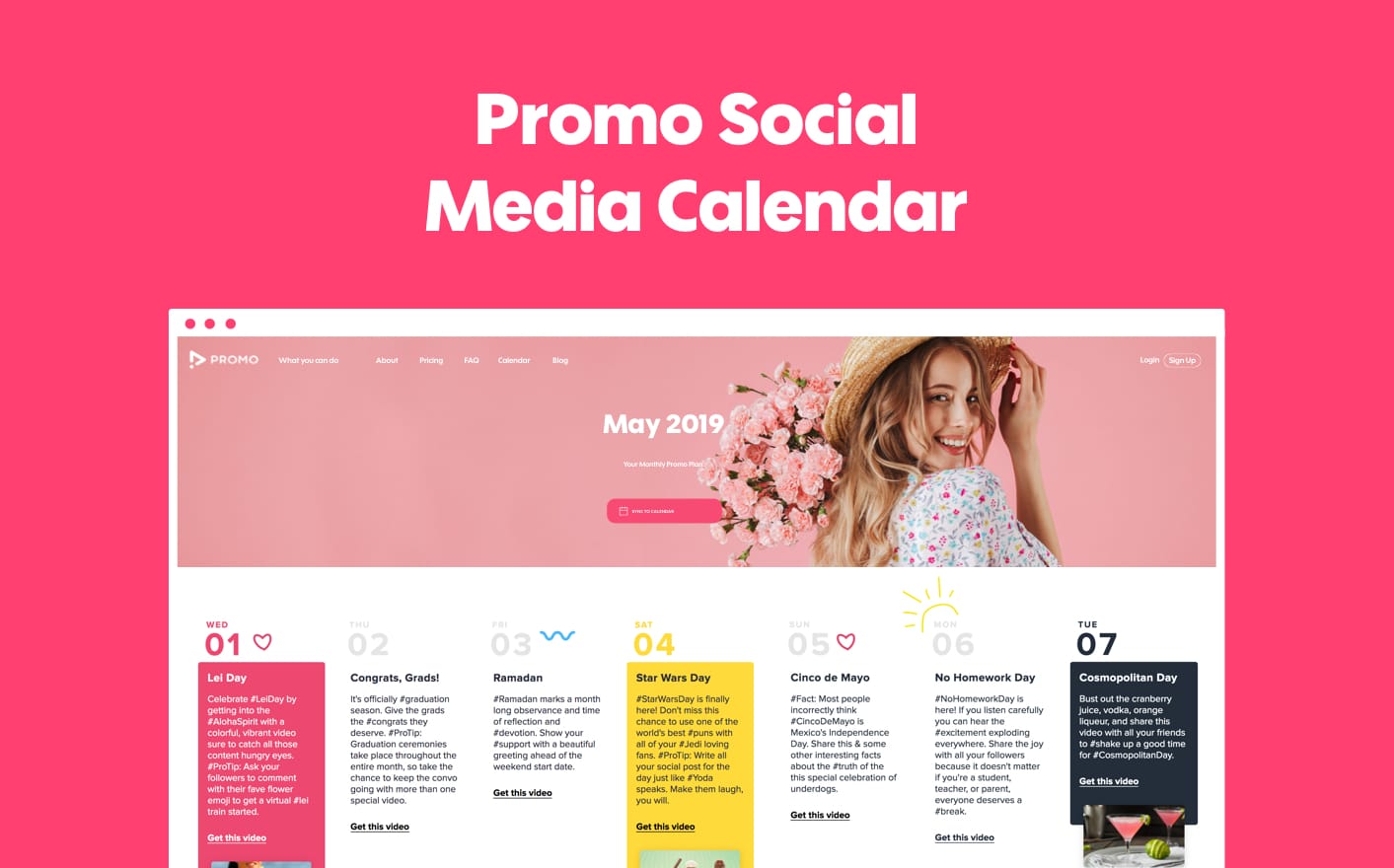
The Promo.com social marketing calendar not only marks all of the post-worthy events but also provides you with ready-made videos to post every day. All you have to do is add your logo and share on your socials – saving you tons of time and giving you quality content to engage your audience!
But before you even get started with your calendar templates, there are just a few things to consider:
Who is your audience and what platform are they on?
Think about the people that you want to reach and consider which type of social media platform they are on. For instance, if you are a B2B company, LinkedIn might be the place for you. If you’re focused on B2C, Facebook and Instagram are always a pretty safe bet.
Consider which social platform is most likely to engage viewers and send traffic to your website and take it from there. You can always just try to post on all of them to see which is most effective if you have the resources to run such an experiment. That said, social media content usually needs to be tweaked for each platform so the whole process can be a time-consuming endeavor. We recommend that you pick the platforms that will likely have the most impact on your business and dedicate yourself to those first.
Pro-tip: It’s important to have all of your ducks in a row when it comes to the different social platforms so make sure to include each one separately in your editorial calendar. It’s a huge no-no to most the exact same stuff on all of the social platforms, especially captions (like asking your followers to retweet a post on Instagram).
Small Business Trend’s calendar is a great example of how to use this tool to avoid getting your wires crossed.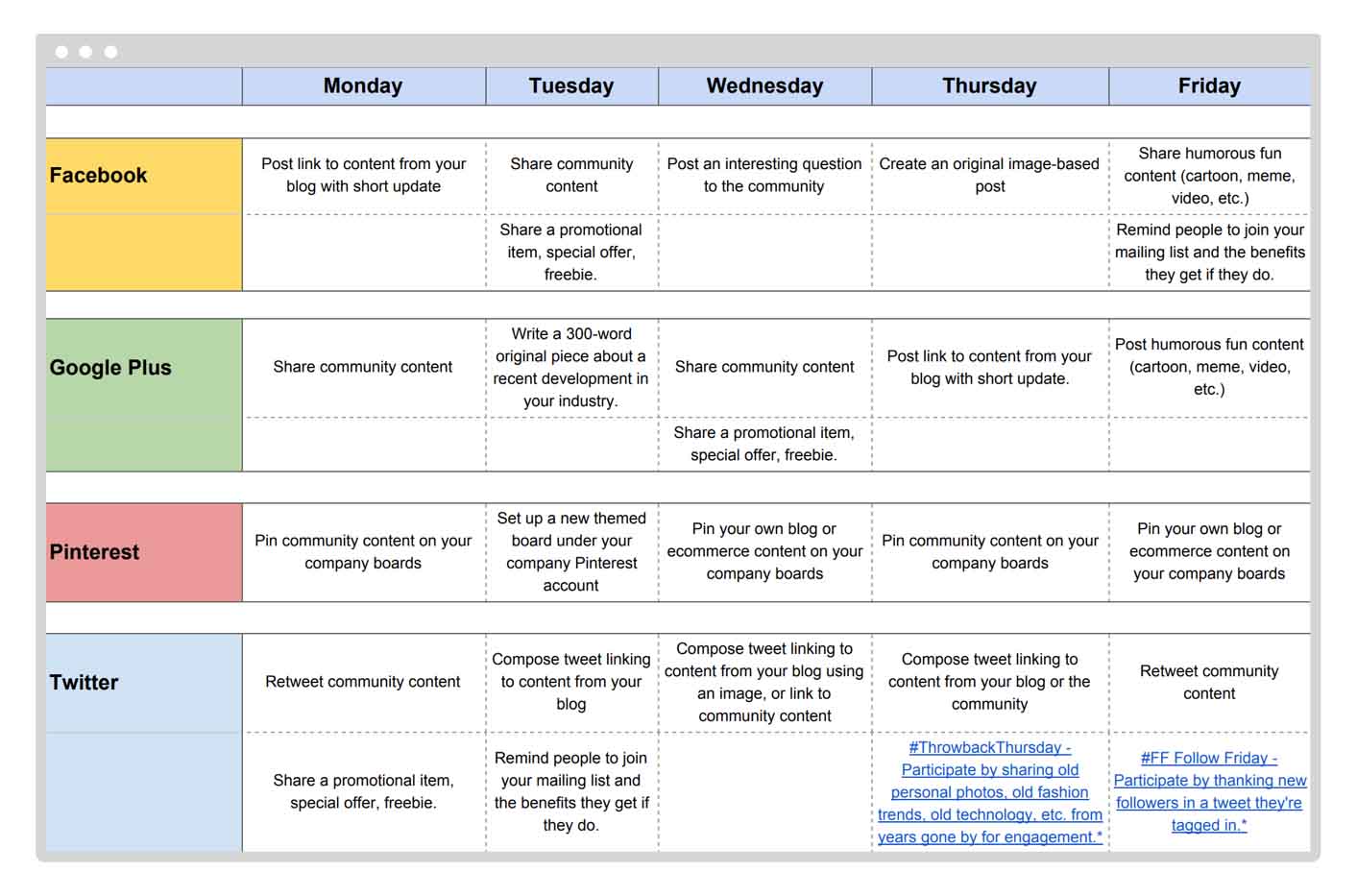
What kind of content should you be posting?
This can seem pretty obvious but we feel compelled to mention it anyway – While it is super important to keep your social media posts varied, it is equally important to keep them consistent and relevant to who you are as a brand. Your viewers made the choice to follow you for a reason.
For example, if you are a restaurant, your followers will expect to see culinary content related to your cuisine. That doesn’t mean you can’t get creative or celebrate significant days on your socials, but we recommend you share those well wishes with food-related visuals and insights. Your mix of content should include a healthy variety of curated articles, videos, industry stories, educational pieces, events, user-generated content and more.
Pro-tip: So, answer this question – who are your followers and why did they choose to follow you? For content ideas, take a look at the social media strategy of other players in your industry.
What content format will best serve your goals?
Once you know what type of content you need to create, and what platform you’re creating it for, it will be fairly simple to determine what content format will work for you. There are 4 primary formats to choose from:
- Text – Any kind of copy you post on your socials – keep it catchy!
- Images – Individual images or carousels.
- Videos – This includes uploaded video ads or live video streaming (and is often the highest viewed content).
- Links – URLs leading to your website or any other external platform.
Unlike choosing a platform, we actually do recommend that you mix and match the content formats that you post. However, keep in mind that depending on the social channels you chose, some formats will be more important than others.
The best way to determine which formats you should focus on is by keeping track of the spikes in your engagement on the in-app analytics dashboard of each platform. Buffer created an excellent guide to help marketers track the performance of their social media campaigns. See which content format performs the best and focus on that route. If you’re going with paid content, Promo created a great tool to help you track your efforts.
You’ll also find that social media platforms actually play favorites with different formats. For instance, links are great for you because they drive traffic to your website but the social media algorithms tend to push links less because they want to discourage their users from leaving their platform.
For the same reason, they tend to push videos because it encourages users to hang around the platform for a longer period of time.
Pro-tip: The good news is that a bunch of smart people conducted a whole lot of in-depth research on social algorithms to teach us how to use it to our advantage.
Now that we know what kind of content to post, when and how often should we post it?
Frequency
Each network has its own posting etiquette. According to research done by Constant Contact here are best posting practices: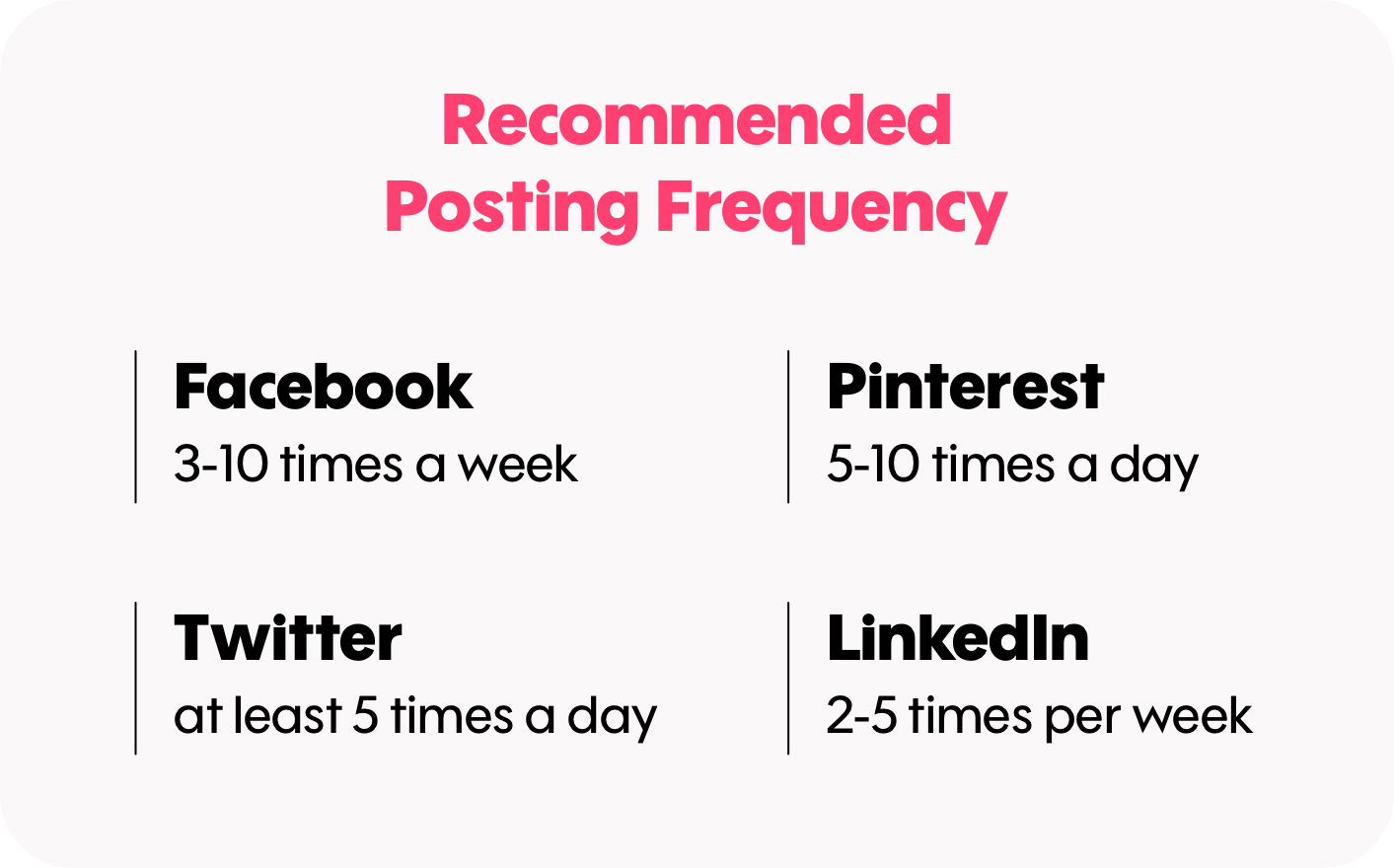 This might seem a bit ambitious, but don’t worry. While this can be your ultimate goal, it’s okay to start slower. The most important part is to stick to a consistent posting schedule. Nothing is less appealing than a Facebook Page in which the most recent post is from two years ago. A consistent posting schedule shows potential followers you are invested in the channel and they can expect good things from you.
This might seem a bit ambitious, but don’t worry. While this can be your ultimate goal, it’s okay to start slower. The most important part is to stick to a consistent posting schedule. Nothing is less appealing than a Facebook Page in which the most recent post is from two years ago. A consistent posting schedule shows potential followers you are invested in the channel and they can expect good things from you.
Timing
Your social media calendar should include two primary content types: Event-driven and evergreen.
Event-driven content is the foundational building blocks of your posting calendar. The first step for any business is populating your calendar with the must-post dates, such as industry events, holidays and big cultural moments. The next step, and no less important is your evergreen content. This could include educational videos, tutorials, product ads or anything else that is relevant to your followers all year round. The placement of your evergreen content is much more flexible because timing is less of an issue.
What events should your calendar include?
Besides for your own business events such as sales, promotions, anniversaries, new product releases and clearances, there is a whole world of cultural moments that you should constantly look out for.
Cultural moments
According to Adweek, cultural moments happen when “brands and trends intersect”. It’s when you take a big cultural event that’s happening on and offline and use it to enhance your brand message. These are dates that you are definitely going to want to mark on your calendar.
They are small pockets of time that give us the rare gift of a pre-engaged audience. The collective experience of occasions like holidays, sporting events, award shows, trends, elections, Game of Thrones season premiere and even social causes, provides ready-made trends for us to ride and create an almost guaranteed marketing impact.
Let’s take a look at the different categories:
Traditional holidays
Oldies but goldies
The traditional moments that were celebrated by various cultures years before we could even say “marketing strategy” have the potential to resonate deeply with your audience. Faith and tradition drive a lot of customers’ decisions so consider taking note of these moments.
While some of the bigger holidays, like Christmas and Thanksgiving, are marketing opportunities that no business can afford to miss, you should also consider creating content for the smaller niche holidays that have less competition and a deeper impact on the audience it is relevant for.
Internet holidays
Pure nonsense
Yes, these cultural moments are all but completely made-up but when enough people share them, they actually become something. These micro-holidays take place almost exclusively online. There your silly days for foodies, pet-lovers and more. You might think that these dates are small peanuts but take into consideration that National Pizza has 34M Tweet impressions!
Some months are busier than others, so for those that are sparse, this is actually a pretty good way to stay on trend. You can choose which ones fit your brand vibe and will engage your target audience best.
Big league events
Be there or be square
These are those moments that have everybody talking. Some come once a year without fail, like the Super Bowl (4.8B Twitter impressions), and some come once every four years like the Presidential elections.
Nevertheless, we can foresee their arrival and plan to ride the trends that excite so many of our followers. When these events come around, they are the buzz of the internet and we would be remiss if we didn’t join in.
Branded content for your calendar
We know what you’re thinking. These cultural moments are cool and all, but they have nothing to do with my business! Well, that is exactly where branded content comes in.
While most of the content you post will directly relate to your business (showcasing your products and services), educational or entertaining content can go a long way to foster engagement and increase brand awareness. In this case, it’s about aligning your product with the moments and movements that your target audience cares about.
According to Marketing Land, the definition of branded content is “content funded by a brand which promotes the brand’s values and provides something of value to audiences — often by entertaining, informing and/or educating.”
By reinforcing selected cultural moments on your social pages with tailored content, you are connecting users to your brand through shared interests (that ideally relate to your business).
Pro-tip: Remember – when you’re not showcasing a specific product or service, you have to use other features that present your brand, such as your logo and unique brand voice.
Let’s get started
So, you officially know the when, why and how of creating and posting valuable content to your social media pages, but now it’s time to find out how to actually create a social media calendar. To create a social content calendar for your business, there are a number of easy-to-use templates that allow you to input your entire social marketing plan and keep your content organized. If you want to do it on your own, you can always use your shared Google calendar or build an excel sheet that works for you: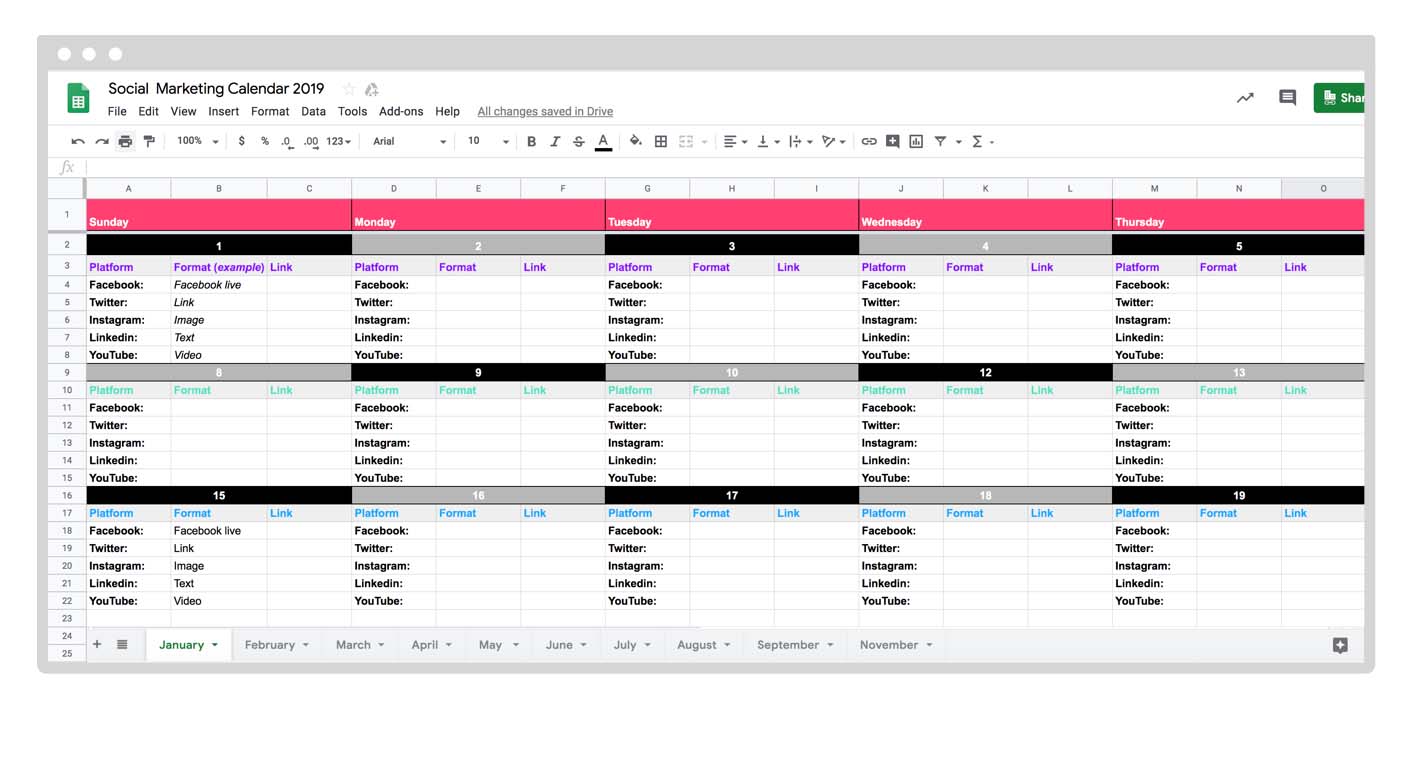 For a constant stream of inspirational ideas, hashtags, caption and quality video content, the Promo Social Media Calendar is where you’ll find it. You can even sync it with your own Google Calendar!
For a constant stream of inspirational ideas, hashtags, caption and quality video content, the Promo Social Media Calendar is where you’ll find it. You can even sync it with your own Google Calendar!
The calendar’s scroll-stopping content lets you engage your audience at the right place and at the right time without the effort of planning and creating in advance.
We know the value of social marketing calendar, but we also know the value of your time. The Promo calendar puts both at the forefront to help you take your business to the next level.

